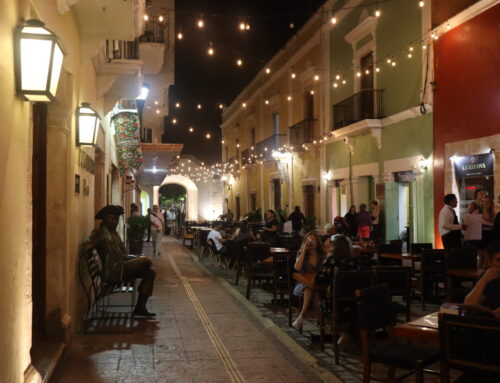Nestled in the lowlands of the Jocko Valley beyond the Mission Mountains, there lies a small piece of Tibet in Montana. It’s a jewel that shines among the grass for peace. I’m talking about the Garden of One Thousand Buddhas.
I ended up in the Garden of One Thousand Buddhas because of Roberta Anderson, a wonderful woman who took in a stranger one of her friends found walking to Canada by the side of Highway 93 (ahem… me) into her home. She volunteers at the garden and, while I stayed under her hospitality, she invited me to see it.
I remember we left from Polson, on the banks of Flathead Lake, and took the road south to Arlee, passing by the beautiful country that is Montana in the springtime. In the background, I could see the last of the snows on the peaks of the Mission Mountain Range, crowned by Ch-paa-qn Peak, aptly named from a Salish word that means “shining peak.”
Since it we were already well into the season, everything was green. In a matter of weeks, Montana’s green fields had turned yellow and purple, heavily laden with flowers. The air was filled with the sweet scent of freshly cut grass and aromatic herbs.
The story behind the garden begins when Gochen Tulku Sang-ngag Rinpoche, a Tibetan master of Nyingma Buddhism, had a prophetic dream about building a garden in a place of flatlands surrounded by mountains. When he traveled to Montana, he identified the garden’s site as the place he’d dreamed of many years before.

The view of the Mission Mountains from the garden is one of the most beautiful sights I’ve ever seen.
The garden’s location is a curious one. If you look at the pictures of the Garden of a Thousand Buddhas with the Mission Mountains in the background, you’d swear it was taken in Tibet or Nepal. The garden, however, is located within the Flathead Indian Reservation, a place still coming to terms on healing the past wounds and trauma inflicted by generations of systemic racism against Native Americans. Tibetans and the local Salish, Kootenai and Pend d’Orreille tribes share a history of invasions and eviction from their ancestral lands. Some might call it a coincidence, but we experienced travelers know that there’s no such thing—everything happens for a reason.
The garden is shaped in the form of a “Darma Wheel” with eight spokes. The wheel represents the cycle of life, death and rebirth. The outer wheel and spokes are footpaths dedicated to the contemplation of the nature of existence, something from which we can all benefit. The garden is nondenominational, which means it’s open for people of all creeds and backgrounds. Along the eight spokes, a thousand Buddhas sit in quiet meditation. In the center of the garden sits a beautiful statue of Yum Chenmo, the Great Mother of Transcendent Wisdom.
Volunteers manicure the fields and flowerbeds or otherwise work to maintain the garden’s vision of bringing enlightenment, joy, wisdom, and peace to the region. While in the garden I made friends with several of the volunteers who were staying in the garden, with whom I’d go kayaking and exploring Glacier National Park over the course of the next few days.

A view of the garden from the hill.
I went for a stroll around the garden, walking counterclockwise around the outer edge of the circle. I took a moment to be mindful of my steps and my breathing, turning my passage through the world into an ongoing meditation. A sensation of joy and peace swept over me, and I felt like a child again, free in the moment. After admiring the statue of Yum Chenmo, I walked to a little pond and sat there, taking in the sight of the placid waters and the statues surrounded by flowers against the background of the Rocky Mountains.
I felt I’d been transported to another plane. This hardly seemed real—which is, ironically, the point of meditating on the nature of existence. Still, I was happy for experiencing the simple pleasures of life: beauty, friendship, peace and boundless joy in the freedom of the moment.
The Garden of One Thousand Buddhas taught me that the most beautiful flowers spring up in the most unexpected of places.
How to get to the garden
- The Garden of One Thousand Buddhas is located in 34574 White Coyote Rd, Arlee, MT 59821, USA.
- Head north from Missoula and take a left onto White Coyote Road. Advance for three blocks, the garden will be located on the left. The site is a 40-minute drive from Missoula, right before reaching the town of Arlee, Montana.
Know before you go
- Entrance is free, but buying something to in the gift shop or leaving a donation is highly recommended, as this helps the maintenance of the garden.
- For more information, check out their website.
- Visit in the spring or early summer, when Montana’s fields are in full bloom, for a particularly magical experience.
Have you visited the Garden of One Thousand Buddhas? Share the details of your experience and what you learned in the comments section below!



Leave A Comment